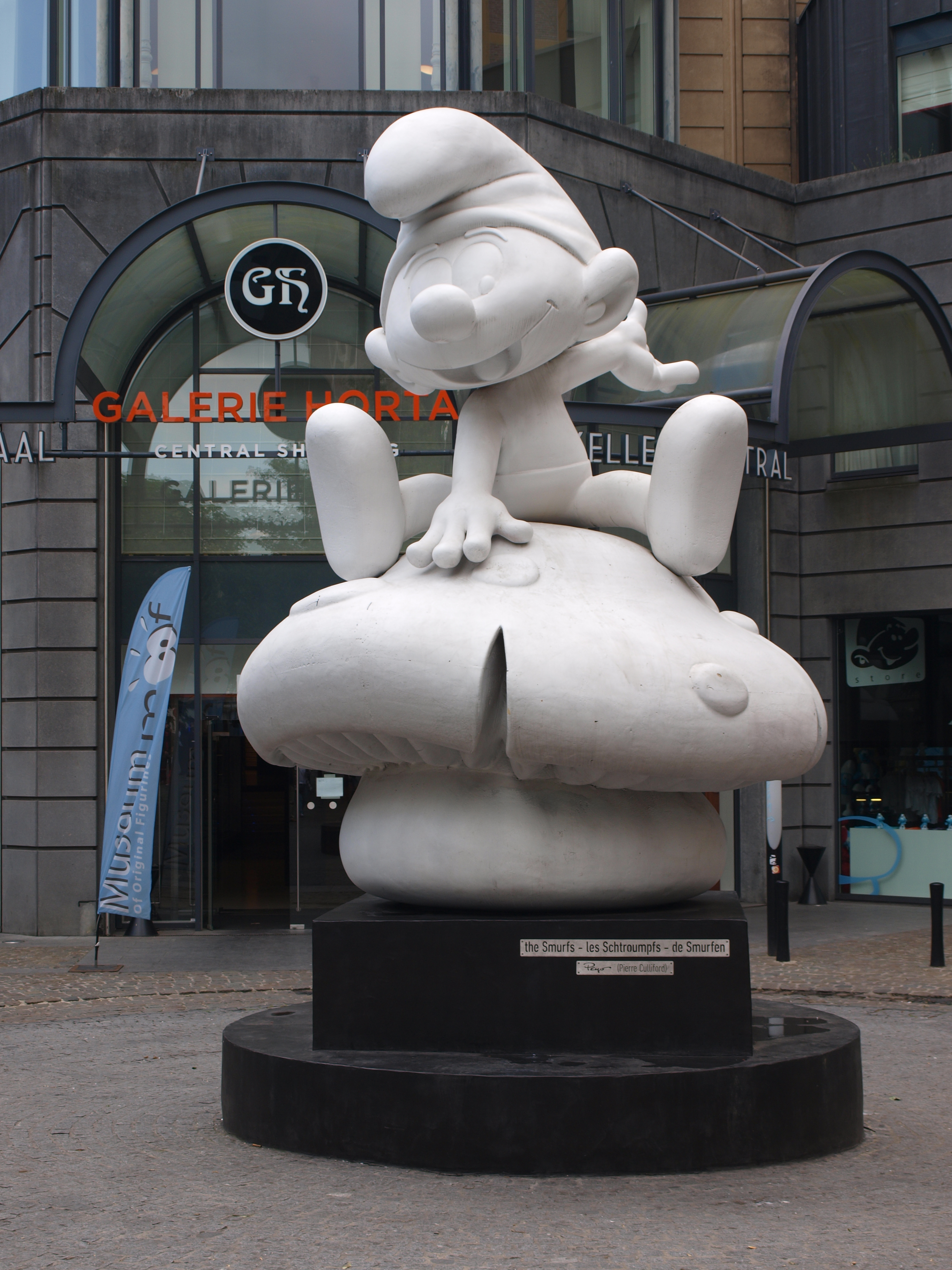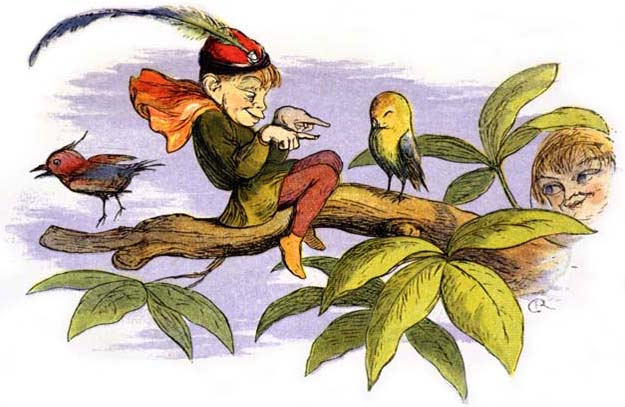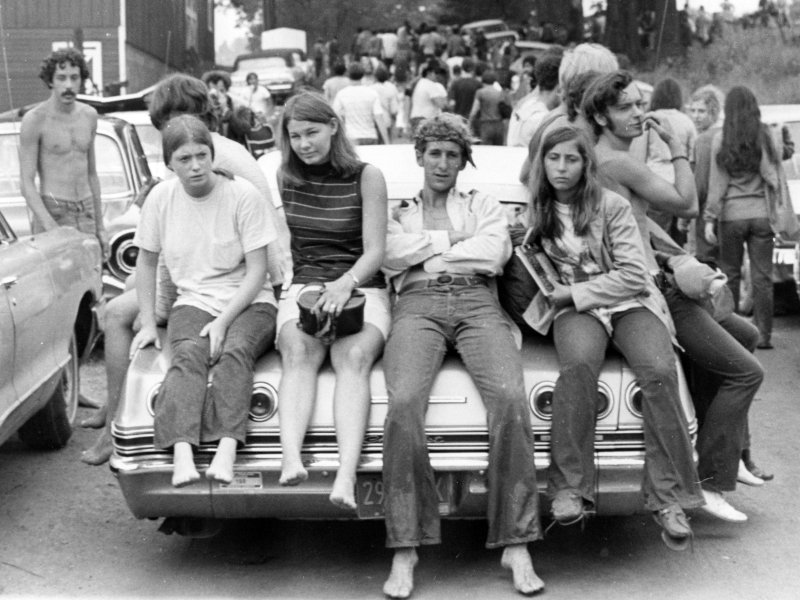|
The Poddington Peas
''The Poddington Peas'' is a British animated television series that was created by Paul Needs and Colin Wyatt of Cairnvale Productions for Poddington PLC; it has thirteen five-minute episodes, and was aired on BBC One as part of the Children's BBC strand (as it had been known from its inception on 9 September 1985 until 4 October 1997) from 14 September to 22 December 1989. The series was regularly repeated throughout the 90s and early 00s until 2002. The series' theme song, composed by Geoff Stephens, describes the eponymous group of Peas living "down at the bottom of the garden". Human-sized garden objects, enormous in size to the Peas, are often seen, such as upturned flowerpots which serve as most of their buildings. Humans themselves are never seen or mentioned (with the single exception of Christmas gift-giver Santa Claus, who left his gifts at Creepy Castle in the last episode). All thirteen episodes were released on VHS by Palace Video in 1990 (HPV0018), but this is now ... [...More Info...] [...Related Items...] OR: [Wikipedia] [Google] [Baidu] |
Animation
Animation is a method by which image, still figures are manipulated to appear as Motion picture, moving images. In traditional animation, images are drawn or painted by hand on transparent cel, celluloid sheets to be photographed and exhibited on film. Today, most animations are made with computer-generated imagery (CGI). Computer animation can be very detailed Computer animation#Animation methods, 3D animation, while Traditional animation#Computers and traditional animation, 2D computer animation (which may have the look of traditional animation) can be used for stylistic reasons, low bandwidth, or faster real-time renderings. Other common animation methods apply a stop motion technique to two- and three-dimensional objects like cutout animation, paper cutouts, puppets, or Clay animation, clay figures. A cartoon is an animated film, usually a short film, featuring an cartoon, exaggerated visual style. The style takes inspiration from comic strips, often featuring anthropomorphi ... [...More Info...] [...Related Items...] OR: [Wikipedia] [Google] [Baidu] |
The Smurfs
''The Smurfs'' (french: Les Schtroumpfs; nl, De Smurfen) is a Belgian comic franchise centered on a fictional colony of small, blue, humanoid creatures who live in mushroom-shaped houses in the forest. ''The Smurfs'' was first created and introduced as a series of comic characters by the Belgian comics artist Peyo (the pen name of Pierre Culliford) in 1958, wherein they were known as ''Les Schtroumpfs''. There are more than 100 Smurf characters, and their names are based on adjectives that emphasise their characteristics, such as "Jokey Smurf", who likes to play practical jokes on his fellow Smurfs. "Smurfette" was the first female Smurf to be introduced in the series. The Smurfs wear Phrygian caps, which came to represent freedom during the modern era. The word "smurf" is the original Dutch translation of the French "schtroumpf", which, according to Peyo, is a word he invented during a meal with fellow cartoonist André Franquin when he could not remember the word ''salt''. ... [...More Info...] [...Related Items...] OR: [Wikipedia] [Google] [Baidu] |
English Folklore
English folklore consists of the myths and legends of England, including the English region's mythical creatures, traditional recipes, urban legends, proverbs, superstitions, and folktales. Its cultural history is rooted in Celtic, Christian, and Germanic folklore. During the Renaissance in the 16th century, England looked to more European texts to develop a national identity. English folklore has continued to differ according to region, although there are shared elements across the country. Its folktales include the traditional Robin Hood tales and the Brythonic-inspired Arthurian legend, and their stories often contained a moral imperative stemming from Christian values. The folktales, characters and creatures are often derived from aspects of English experience, such as topography, architecture, real people, or real events. History Before England was founded in the year 927, Wessex and its surrounding areas' cultures were transformed by the invasion of the Danish Kin ... [...More Info...] [...Related Items...] OR: [Wikipedia] [Google] [Baidu] |
West Country English
West Country English is a group of English language varieties and accents used by much of the native population of South West England, the area sometimes popularly known as the West Country. The West Country is often defined as encompassing the counties of Cornwall, Devon, Dorset, Somerset, Wiltshire, the City of Bristol, and Gloucestershire. However, the northern and eastern boundaries of the area are hard to define. In the adjacent counties of Herefordshire, Worcestershire, Berkshire, Hampshire, the Isle of Wight and Oxfordshire it is possible to encounter similar accents and, indeed, much the same distinct dialect but with some similarities to others in neighbouring regions. Although natives of such locations, especially in rural parts, can still have West Country influences in their speech, the increased mobility and urbanisation of the population has meant that in the more populous counties of Worcestershire, Berkshire, Hampshire (including the Isle of Wight), and Oxfo ... [...More Info...] [...Related Items...] OR: [Wikipedia] [Google] [Baidu] |
Overalls
Overalls, also called bib-and-brace overalls or dungarees, are a type of garment usually used as protective clothing when working. The garments are commonly referred to as a "pair of overalls" by analogy with "pair of trousers". Overalls were originally made of denim, but they can also be made of corduroy, chino cloth, or Leather to name a few. Overalls were invented in the mid to late 1890s by Grace Howard and Jacob W. Davis at Levi Strauss & Co., but they went through an evolution to reach their modern form. Initially only used for protective clothing in work settings, such as farming, welding, working in oil fields, ext. They have also become a garment of high fashion as "potential cult items". Many high fashion brands have released their own spin on overalls. History Beginnings The exact beginnings of the wearing of overalls are unclear, but they are mentioned in literature as early as 1776 as protective working garments commonly worn by slaves. The first evidence o ... [...More Info...] [...Related Items...] OR: [Wikipedia] [Google] [Baidu] |
Green Eyeshade
Green eyeshades are a type of visor that were worn most often from the late 19th century to the mid-20th century by accountants, telegraphers, copy editors and others engaged in vision-intensive, detail-oriented occupations to lessen eye strain due to early incandescent lights and candles, which tended to be harsh (the classic banker's lamp had a green shade for similar reasons). Because they were often worn by people involved in accounting, auditing, economics, and budgeting, they became associated with these activities. Green eyeshades were often made of a transparent dark green or blue-green colored celluloid, although leather and paper were used to make the visor portion as well. One manufacturer, the Featherweight Eyeshade Company, described their eyeshade as "healthful, color peculiarly restful to the eyes". Green eyeshades are still on the market, typically sold as "dealer's visors". They retain some popularity in the gambling community. Several individuals, including Wil ... [...More Info...] [...Related Items...] OR: [Wikipedia] [Google] [Baidu] |
The Princess And The Pea
"The Princess and the Pea" ( da, "Prinsessen paa Ærten"; direct translation: "The Princess on the Pea") is a literary fairy tale by Hans Christian Andersen about a young woman whose royal ancestry is established by a test of her sensitivity. The tale was first published with three others by Andersen in an inexpensive booklet on 8 May 1835 in Copenhagen by C. A. Reitzel. Andersen had heard the story as a child, and it likely has its source in folk material, possibly originating from Sweden, as it is unknown in the Danish oral tradition. Neither "The Princess and the Pea" nor Andersen's other tales of 1835 were well received by Danish critics, who disliked their casual, chatty style and their lack of morals. The tale is classified in the Aarne–Thompson–Uther Index as ATU 704, "The Princess and the Pea". Plot The story tells of a prince who wants to marry a princess but is having difficulty finding a suitable wife. Something is always wrong with those he meets and he c ... [...More Info...] [...Related Items...] OR: [Wikipedia] [Google] [Baidu] |
Hippy
A hippie, also spelled hippy, especially in British English, is someone associated with the counterculture of the 1960s, originally a youth movement that began in the United States during the mid-1960s and spread to different countries around the world. The word ''hippie'' came from '' hipster'' and was used to describe beatniks who moved into New York City's Greenwich Village, in San Francisco's Haight-Ashbury district, and Chicago's Old Town community. The term ''hippie'' was used in print by San Francisco writer Michael Fallon, helping popularize use of the term in the media, although the tag was seen elsewhere earlier. The origins of the terms '' hip'' and ''hep'' are uncertain. By the 1940s, both had become part of African American jive slang and meant "sophisticated; currently fashionable; fully up-to-date". The Beats adopted the term ''hip'', and early hippies inherited the language and countercultural values of the Beat Generation. Hippies created their own communiti ... [...More Info...] [...Related Items...] OR: [Wikipedia] [Google] [Baidu] |
Stethoscope
The stethoscope is a medical device for auscultation, or listening to internal sounds of an animal or human body. It typically has a small disc-shaped resonator that is placed against the skin, and one or two tubes connected to two earpieces. A stethoscope can be used to listen to the sounds made by the heart, lungs or intestines, as well as blood flow in arteries and veins. In combination with a manual sphygmomanometer, it is commonly used when measuring blood pressure. Less commonly, "mechanic's stethoscopes", equipped with rod shaped chestpieces, are used to listen to internal sounds made by machines (for example, sounds and vibrations emitted by worn ball bearings), such as diagnosing a malfunctioning automobile engine by listening to the sounds of its internal parts. Stethoscopes can also be used to check scientific vacuum chambers for leaks and for various other small-scale acoustic monitoring tasks. A stethoscope that intensifies auscultatory sounds is called a phonen ... [...More Info...] [...Related Items...] OR: [Wikipedia] [Google] [Baidu] |
Lumberjack
Lumberjacks are mostly North American workers in the logging industry who perform the initial harvesting and transport of trees for ultimate processing into forest products. The term usually refers to loggers in the era (before 1945 in the United States) when trees were felled using hand tools and dragged by oxen to rivers. The work was difficult, dangerous, intermittent, low-paying, and involved living in primitive conditions. However, the men built a traditional culture that celebrated strength, masculinity, confrontation with danger, and resistance to modernization. Terminology The term lumberjack is of Canadian derivation. The first attested use of the word comes from an 1831 letter to the ''Cobourg Star and General Advertiser'' in the following passage: "my misfortunes have been brought upon me chiefly by an incorrigible, though perhaps useful, race of mortals called lumberjacks, whom, however, I would name the Cossack's of Upper Canada, who, having been reared among th ... [...More Info...] [...Related Items...] OR: [Wikipedia] [Google] [Baidu] |
Chippy
Chippy or Chippie may refer to: Arts and entertainment * ''Chippy'' (album), an album of songs from a play of the same name. * ''Chippy'' (film), a 2017 Malayalam-language Indian film. * ''Chippy'' (2019 video game), a bullet hell video game developed by Facepunch. * ''Chippy'' (2013 video game), a time management video game produced by Glitchers. *The Tim and Eric Awesome Show, Great Job! used the word to name a gigantic baby with a mustache in season 1. People * Chippy (nickname) * Chris Hipkins (born 1978) 41st and current Prime Minister of New Zealand, nicknamed "Chippy" * Bertha Hill (1905–1950), American blues and vaudeville singer and dancer nicknamed "Chippie" * Chippy (actress) (born 1975), Indian actress in Malayalam and Kannada films Other uses * Mrs Chippy, a cat that accompanied Ernest Shackleton's Imperial Trans-Antarctic Expedition of 1914–17 * Chippy, a brand of corn chips in the Philippines, made by Universal Robina * ''Chippy'', a slang term for a carpen ... [...More Info...] [...Related Items...] OR: [Wikipedia] [Google] [Baidu] |








